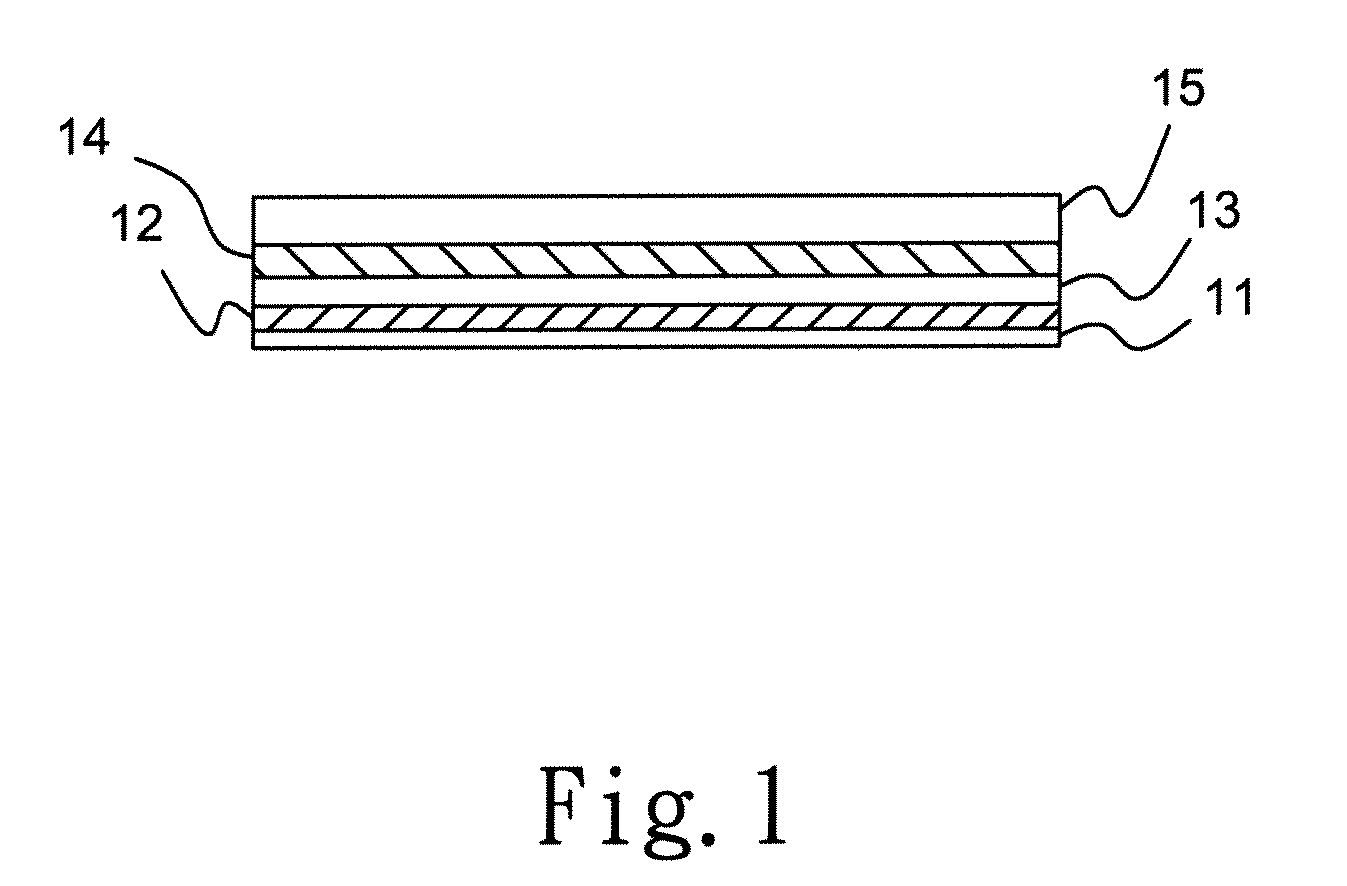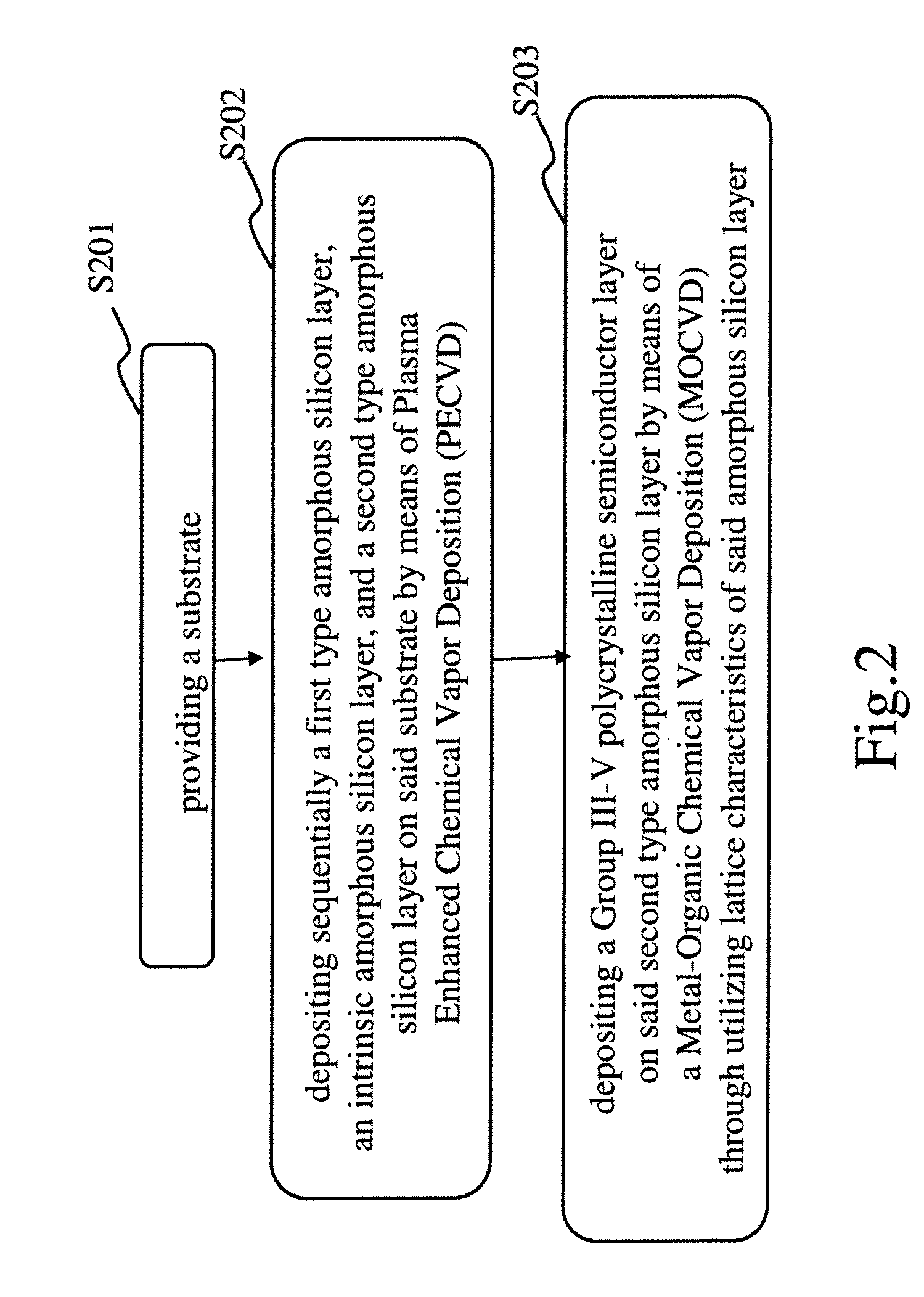Group iii-v solar cell and method of manufacturing the same
a solar cell and solar cell technology, applied in the field of solar cells, can solve the problems of low photoelectric conversion efficiency, high price, and inaccessibility to ordinary households, and achieve the effects of enhancing chemical vapor deposition, and increasing the photoelectric conversion efficiency of solar cells
- Summary
- Abstract
- Description
- Claims
- Application Information
AI Technical Summary
Benefits of technology
Problems solved by technology
Method used
Image
Examples
Embodiment Construction
[0016]The purpose, construction, features, functions and advantages of the present invention can be appreciated and understood more thoroughly through the following detailed description with reference to the attached drawings.
[0017]Firstly, refer to FIG. 1 for a schematic diagram of a Group III-V solar cell according to the present invention. As shown in FIG. 1, the Group III-V solar cell of the present invention comprises: a substrate 11, a first type amorphous silicon layer 12, an intrinsic amorphous silicon layer 13, a second type amorphous silicon layer 14, and a Group III-V polycrystalline semiconductor layer 15. Wherein, the substrate 11 can be made of glass, quartz, transparent plastic, sapphire, or flexible materials.
[0018]In order to receive sunlight and generate electricity, P-type semiconductor and N-type semiconductor (the first type amorphous silicon layer 12, and the second type amorphous silicon layer 14) of different conductive properties are applied on two sides of ...
PUM
| Property | Measurement | Unit |
|---|---|---|
| semiconductor | aaaaa | aaaaa |
| transparent | aaaaa | aaaaa |
| flexible | aaaaa | aaaaa |
Abstract
Description
Claims
Application Information
 Login to View More
Login to View More - R&D
- Intellectual Property
- Life Sciences
- Materials
- Tech Scout
- Unparalleled Data Quality
- Higher Quality Content
- 60% Fewer Hallucinations
Browse by: Latest US Patents, China's latest patents, Technical Efficacy Thesaurus, Application Domain, Technology Topic, Popular Technical Reports.
© 2025 PatSnap. All rights reserved.Legal|Privacy policy|Modern Slavery Act Transparency Statement|Sitemap|About US| Contact US: help@patsnap.com



